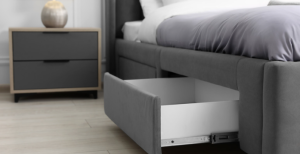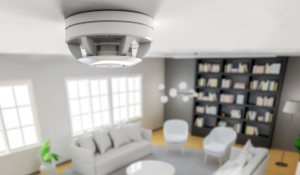How to Choose the Right Lighting for Every Room: A Beginner’s Guide
Choosing the right lighting can completely transform a room. It affects the atmosphere, functionality, and overall aesthetics of your space. Whether you’re lighting a cozy living room, a productive workspace, or a tranquil bedroom, understanding the different types of lighting and fixtures will help you create the perfect ambiance. Let’s break it down in simple terms!
Step 1: Understand the Basics of Lighting
Types of Lighting
There are three main types of lighting to consider for your home:
- Ambient Lighting: This is the general light that fills the room, making it bright enough to see and move around safely.
- Task Lighting: This provides focused light for specific tasks, like reading or cooking.
- Accent Lighting: This is used to highlight features in a room, such as artwork or architectural details.
Step 2: Consider LED Temperature
What Is LED Temperature?
LED temperature refers to the colour of light emitted by the bulb, measured in Kelvin (K). Different temperatures create different atmospheres:
– Warm White (2700K – 3000K): This range provides a cozy, inviting glow. It’s perfect for living rooms, bedrooms, and dining areas.
– Neutral White (3500K – 4100K): This creates a balanced light that’s great for kitchens and bathrooms where clarity is important.
– Cool White (5000K – 6500K): This bright, white light is energizing and ideal for workspaces, garages, or areas where you need focus.
Choosing the Right Temperature
Consider the mood you want to create in each room. For relaxing spaces, stick with warm whites. For functional areas, like kitchens or home offices, go for neutral or cool whites.
Step 3: Select the Right LED Style
Types of LED Fixtures
When it comes to LED lighting, you have various styles to choose from:
- Traditional LED Bulbs: These are versatile and can fit into most existing fixtures. Great for general lighting!
- Strip Lights: Perfect for adding a modern touch or highlighting architectural features. They can be installed under cabinets, along shelves, or in coves.
- Flush Mount Lights: These are mounted directly to the ceiling and are great for rooms with low ceilings or for achieving a sleek look.
Choosing the Right Style
Think about the overall aesthetic of your room. For a modern look, opt for strip lights or sleek flush mounts. For a classic feel, traditional LED bulbs in decorative fixtures work well.
Step 4: Lighting for Different Rooms
Living Room
– Ambient Lighting: Use warm white LED bulbs in floor lamps or ceiling fixtures for a cozy feel.
– Accent Lighting: Consider wall sconces or LED strip lights behind furniture to create depth and interest.
Kitchen
– Task Lighting: Install under-cabinet strip lights for effective task lighting on countertops. Use neutral white LEDs in pendant lights over the island.
– Ambient Lighting: A flush mount ceiling fixture can provide general light.
Bedroom
– Ambient Lighting: Warm white LED bulbs in bedside lamps create a soothing atmosphere.
– Task Lighting: Use adjustable wall sconces or table lamps for reading.
Bathroom
– Task Lighting: Bright, neutral white lights above the mirror are essential for grooming tasks.
– Accent Lighting: Soft, warm LED lights can create a relaxing ambiance for baths.
Step 5: Final Touches
Dimmers
Consider installing dimmer switches to adjust the brightness based on your mood or time of day. This is especially useful in living rooms and bedrooms!
Layering Light
Combine different types of lighting (ambient, task, and accent) to create a well-lit, inviting space. This layering adds depth and functionality to your lighting scheme.
Conclusion
Choosing the right lighting for each room doesn’t have to be overwhelming! By understanding LED temperatures, styles, and the specific needs of each space, you can create a beautiful and functional lighting plan for your home.
Remember, lighting can set the tone for any room—so take your time and experiment with different options to find what works best for you. Happy lighting!



